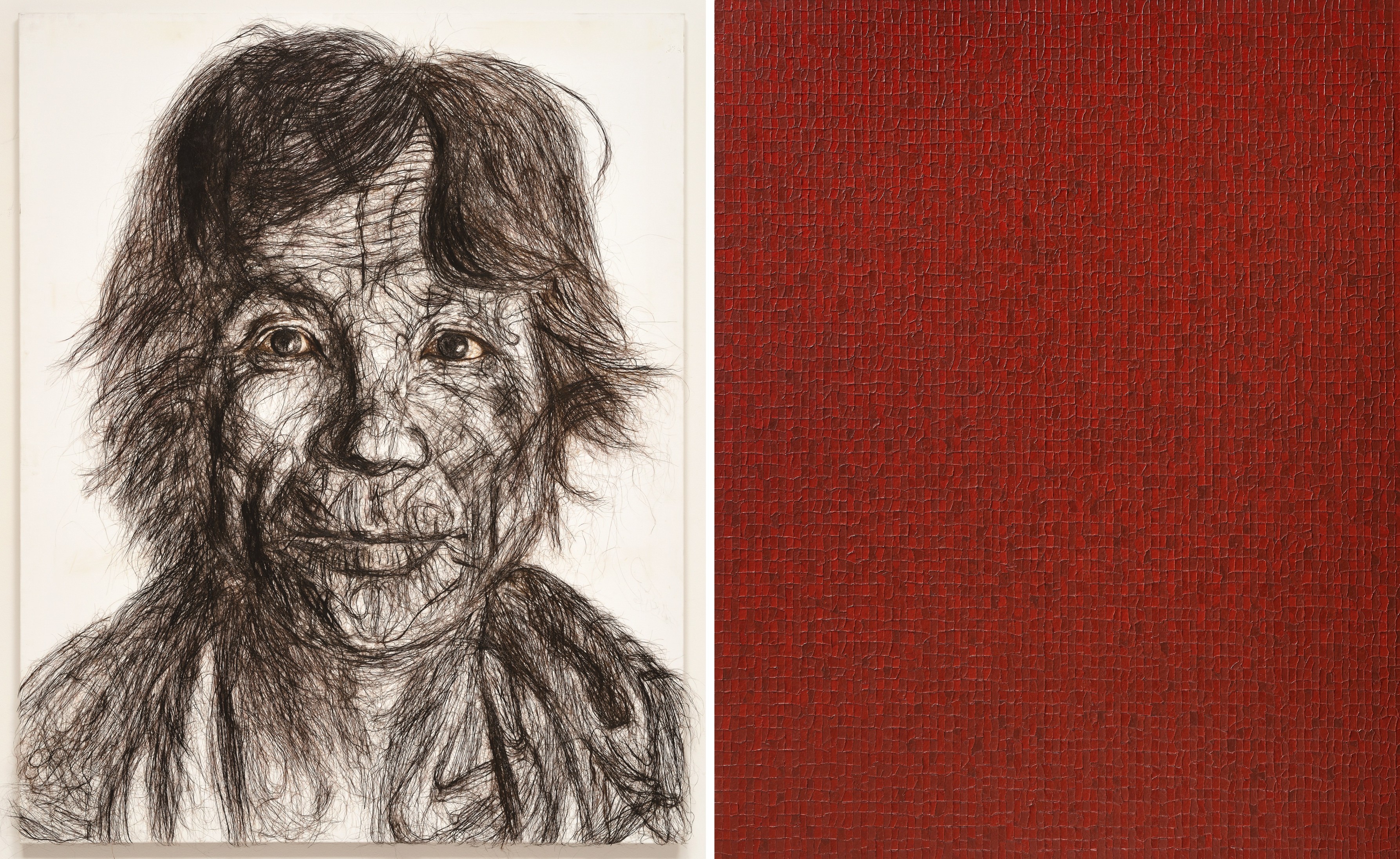Korean contemporary master artists’ oeuvres celebrated at MMCA
Date Jun 09, 2021
 Hwang Jai-hyoung's "Exposed Face" (2017), left, and Chung Sang-hwa's "Untitled 95-9-10" (1995). Courtesy of the artist and MMCA, respectively
Hwang Jai-hyoung's "Exposed Face" (2017), left, and Chung Sang-hwa's "Untitled 95-9-10" (1995). Courtesy of the artist and MMCA, respectively
The oeuvres of two veteran artists closely associated with two of South Korea’s contemporary art movements – Minjung Misul (“revolutionary art for the masses”) and Dansaekhwa (“monochrome paintings”) – have recently come to the fore in a retrospective exhibition being held at the National Museum of Modern and Contemporary Art, Korea (MMCA) in Seoul. The artworks span several decades.
Hwang Jai-hyoung, also known as the “miner-painter,” is widely known for working in coal mines to capture the lives of the underground laborers as well as the rise and fall of Korea’s mining industry.
He also formed an organization called “Imsul-nyeon, 98992” as part of the Minjung Art Movement, a socio-political campaign of art for the masses that grew popular in the 1980s as protest against the military dictatorship, particularly after the brutal suppression of the Gwangju pro-democracy movement.
More than 60 paintings, including recent works where human hair was used to “re-draw” some of his earlier portraits of miners, are featured in the exhibition: “Hwang Jai Hyoung: Restoration of Human Dignity,” which runs through August 22.
Another defining movement in Korea’s modern art history is Dansaekhwa. This abstract art form achieved through labor-intensive, meditative repetition began and flourished in the 1970s.
Chung Sang-hwa is among the pioneering members of this school which include Park Seo-bo and Ha Chong-hyun.
The exhibition “Chung Sang Hwa” runs through September 26 and showcases more than 100 pieces of Chung’s creative endeavors from early abstract paintings to his signature works featuring grid compositions.
The simple-looking grid compositions that dominate his canvases are in fact demonstrative of his unique “peeling off and filling in” method.
The 89-year-old artist first applies kaolin on a canvas with a brush for more than a week to create a three-to-five-millimeter-thick layer. He then folds the canvas vertically and horizontally, creating natural cracks and crevices on its surface. By repeatedly peeling off the gridded kaolin and filling the spaces in with acrylic paint, a process that required intense physical commitment and patience, his signature work was born.

The Ministry of Culture, Sports and Tourism's "Korea Here & Now" work can be used under the condition of "Public Nuri Type 1 (Source Indication)."




